Physical Address
304 North Cardinal St.
Dorchester Center, MA 02124
The extensor carpi ulnaris (ECU) tendon is stabilized within the ulnar groove by a fibro-osseus subsheath lying deep to the extensor retinaculum ( Fig. 38.1 ). Injury to the subsheath results in volar subluxation of the tendon around the ulna head with forearm rotation.
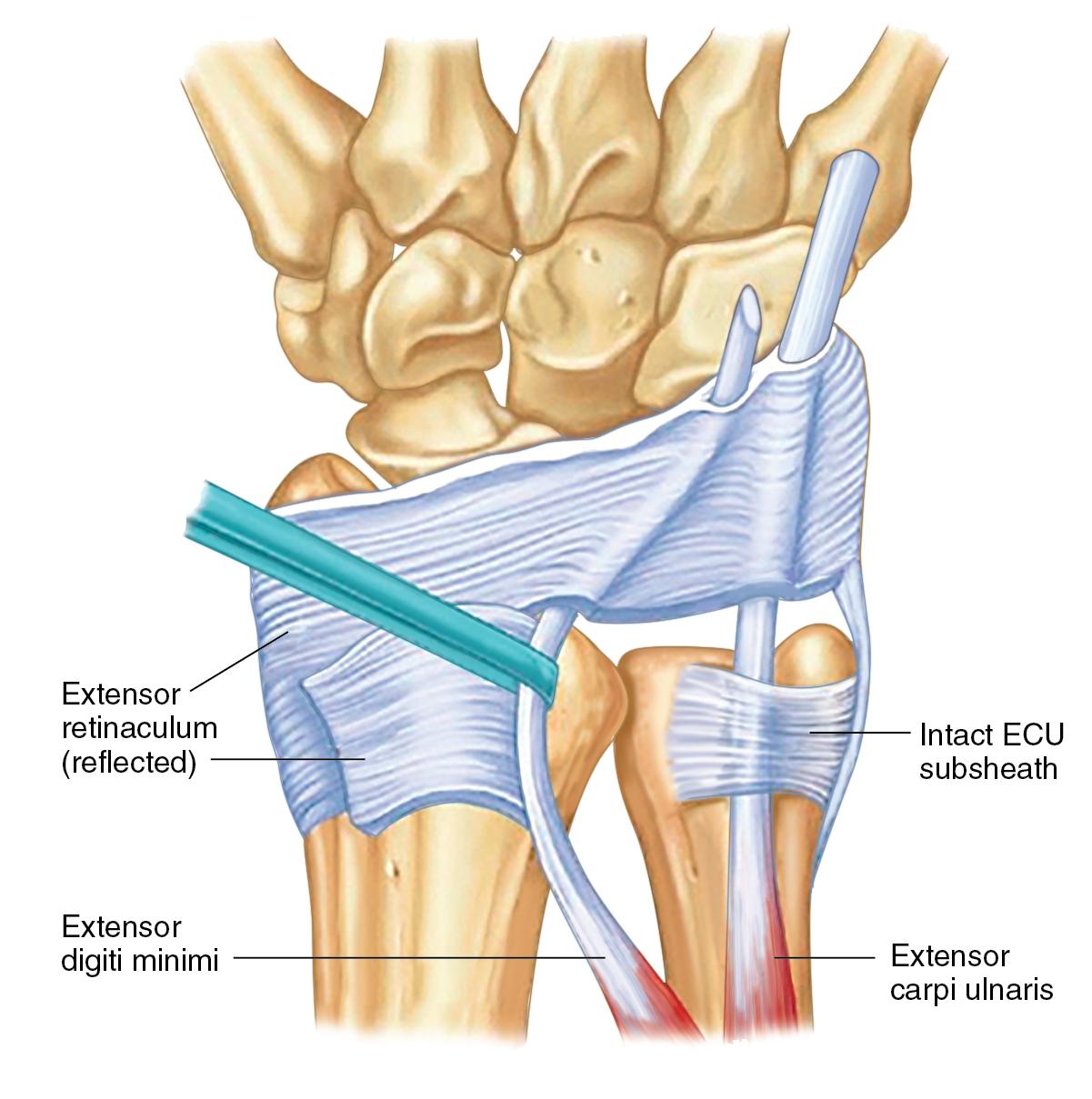
Subsheath injury occurs during hypersupination of the forearm, ulnar deviation and flexion of the wrist, or active contraction of the ECU muscle.
Traumatic ECU subluxation is relatively common in young athletes and is often associated with racquet or stick sports (i.e., tennis, golf, baseball).
Immobilization in a long-arm or Muenster cast with the forearm pronated and the wrist slightly extended and radially deviated for 4 to 6 weeks is recommended as first-line treatment.
ECU stabilization surgery is indicated in patients with persistent symptoms.
Volar subluxation of the ECU tendon is also common in patients with rheumatoid arthritis (RA). With loss of the ECU moment arm, the radial wrist extensors act unopposed and contribute to radial wrist deviation and carpal supination. Although ECU subluxation is rarely symptomatic in RA patients, dorsal repositioning of the ECU tendon with an extensor retinaculum sling or extensor carpi radialis longus (ECRL) to ECU tendon transfer improves wrist alignment.
Patients complain of a painful snapping sensation over the ulnodorsal wrist.
The ECU synergy test is performed with the patient’s elbow flexed at 90 degrees and the forearm in full supination. The examiner grasps the patient’s thumb and index finger with one hand and palpates the ECU tendon with the other hand. The patient is asked to radially abduct the thumb against resistance ( Fig. 38.2 ). Patients with ECU pathology will have pain along the course of the tendon during this maneuver. If subluxation exists, tendon bowstringing can be seen beneath the skin.
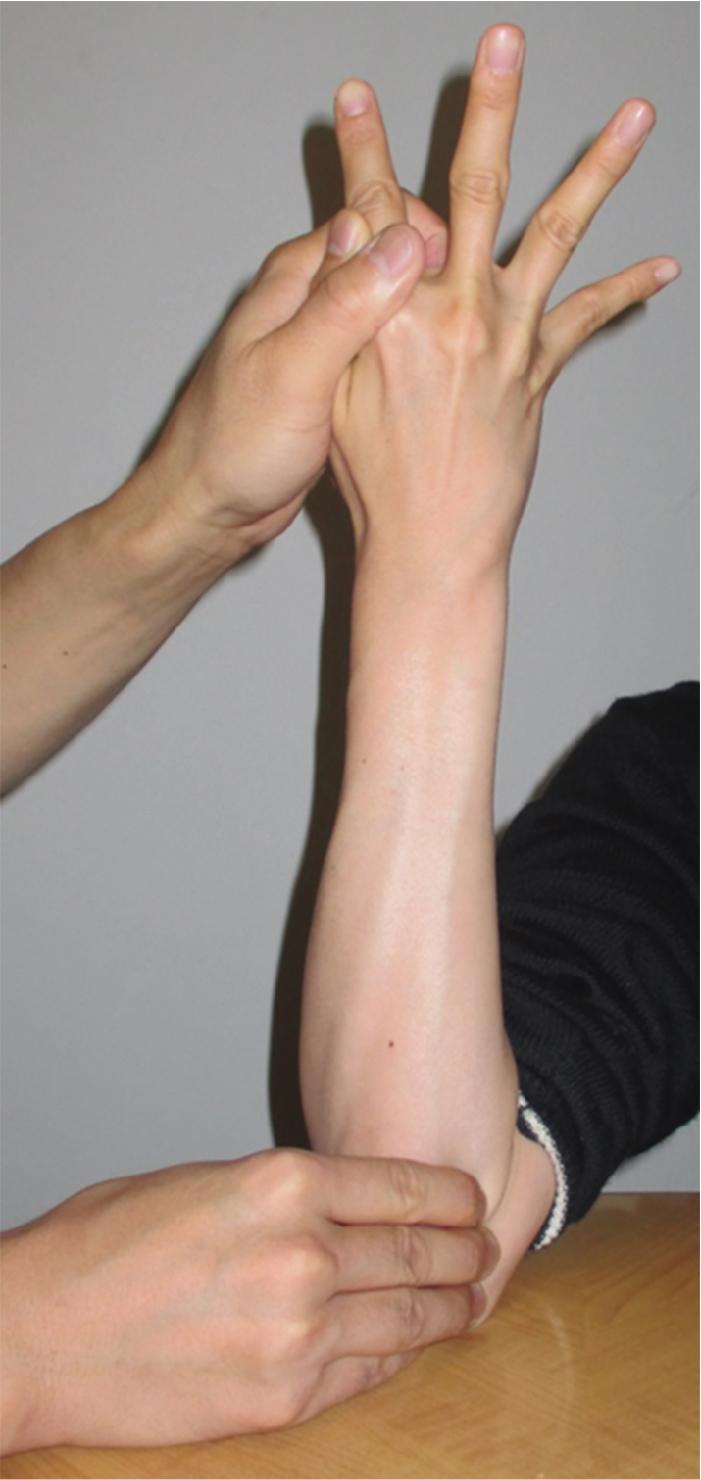
Supination, ulnar deviation, and wrist flexion creates the greatest angle between the ECU and the ulna. Patients can often demonstrate subluxation with this position.
Other sources of ulnar-sided wrist pain, including ulnar styloid fractures, triangular fibrocartilage complex (TFCC) injuries, ulnar impaction syndrome, and flexor carpi ulnaris (FCU) tendonitis, must be ruled out. Diagnosis of subsheath tears can be difficult, even for experienced physicians.
A plain radiograph of the wrist is required to exclude a fracture or other bony etiology for ulnar-sided wrist pain.
Dynamic ultrasound is useful to confirm ECU tendon subluxation if the diagnosis is unclear.
The ECU tendon is stabilized within the ulnar groove by a fibro-osseous subsheath, which is deep to the extensor retinaculum ( Fig. 38.3 ). This subsheath is unique to the sixth compartment—the other dorsal compartments are separated only by intervening septae. The subsheath spans the ECU groove over the ulna to stabilize the ECU, whereas the overlying extensor retinaculum covers the ECU and provides no restraining function.
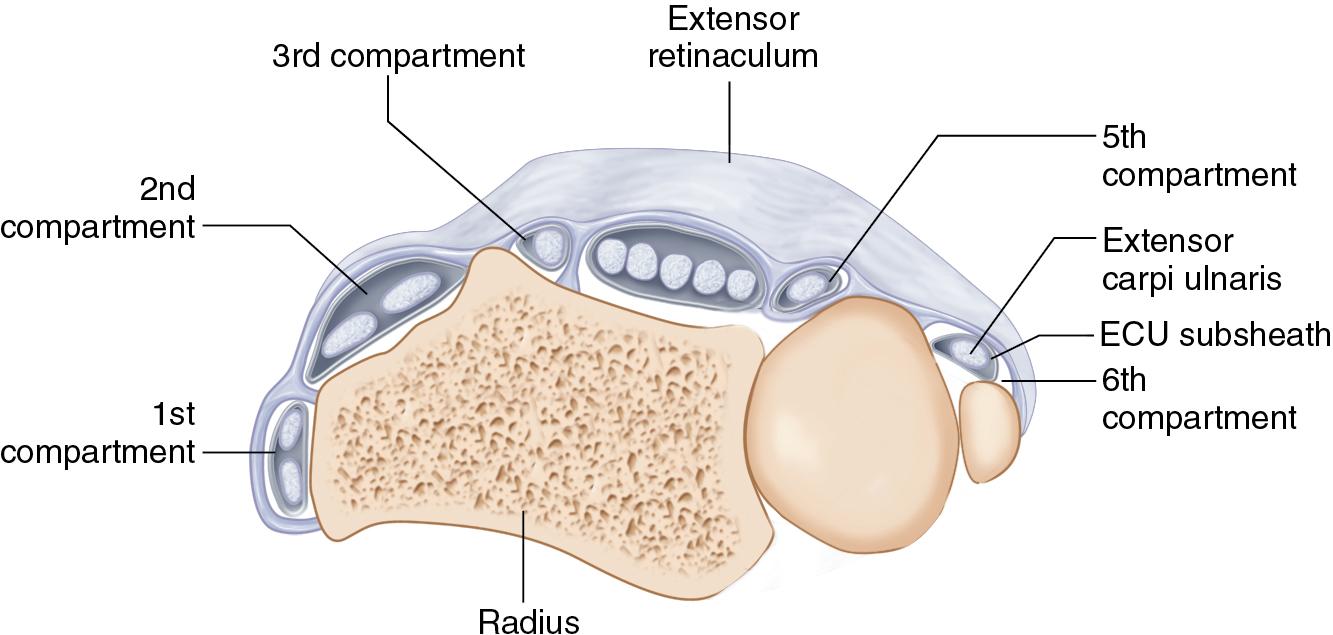
Subsheath disruption can result in one of three ways: radial-sided rupture ( Fig. 38.4A ), ulnar-sided rupture (see Fig. 38.4B ), or detachment of the periosteum from the ulna in continuity with the subsheath (see Fig. 38.4C ).
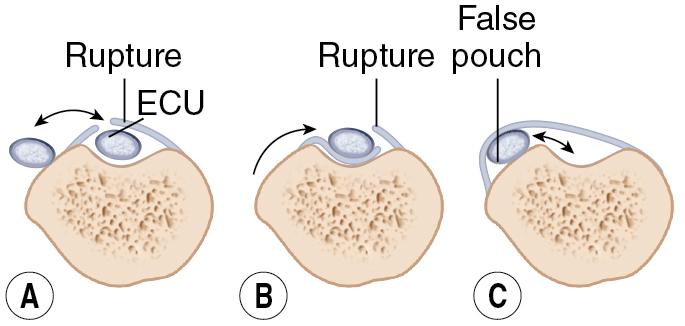
The dorsal sensory branch of the ulnar nerve runs in the subcutaneous tissue along the sixth compartment and must be identified and protected during the operation ( Fig. 38.5A–B ).
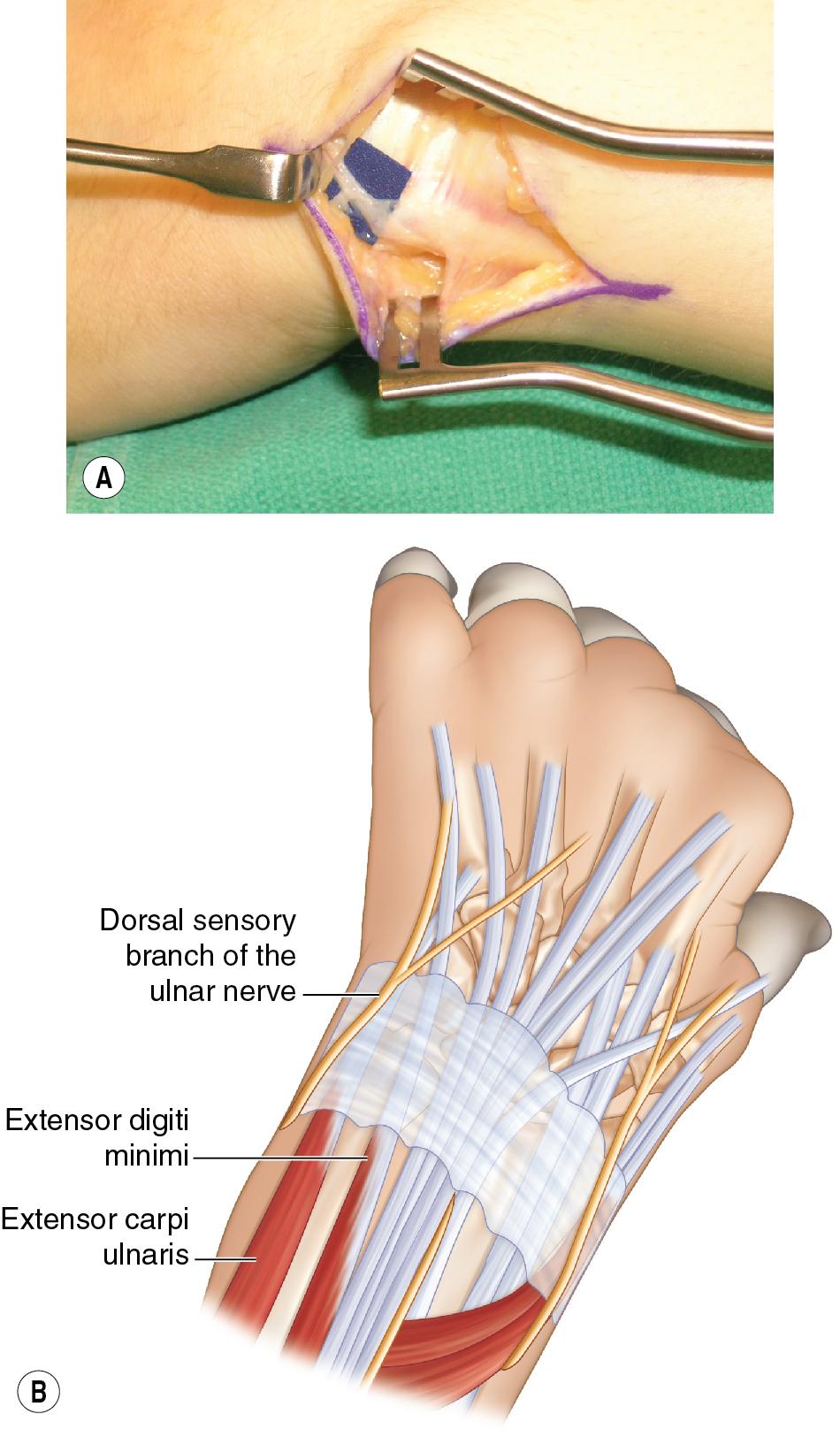
Become a Clinical Tree membership for Full access and enjoy Unlimited articles
If you are a member. Log in here